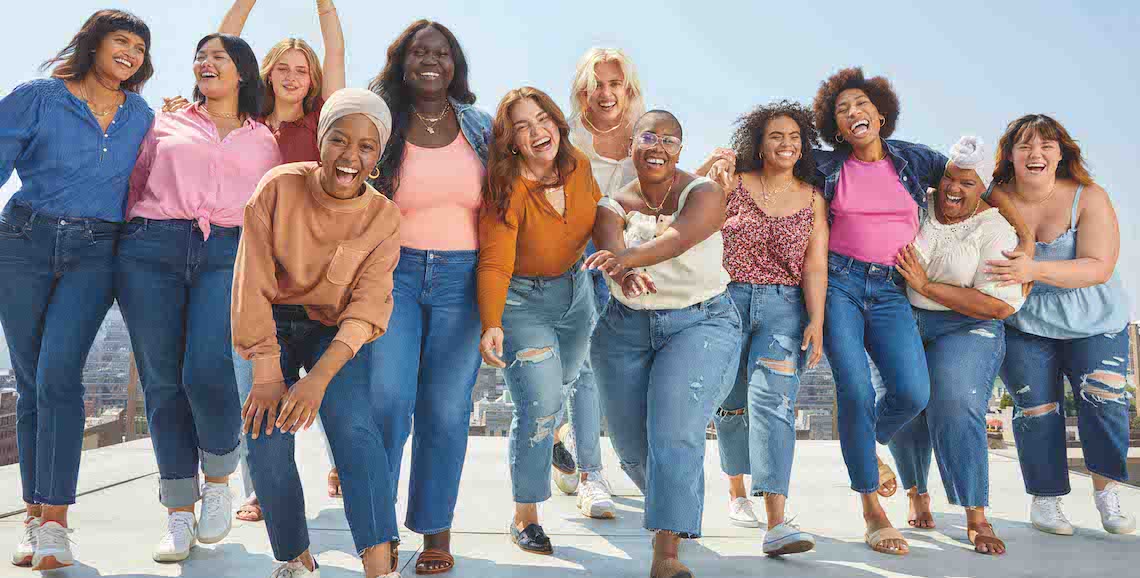Get the top trends, brands and industry news in fashion, beauty and wellness, straight to your inbox daily. Sign up for the Glossy Daily Newsletter here.
On its May 26 earnings call, Gap Inc. announced its decision to scale back the groundbreaking accessibility of inclusive sizes launched by its Old Navy brand in August 2021. It owed the move to a decrease in demand for larger sizes. Old Navy will continue to carry sizes 0-30 and XS-4X online, but dozens of stores will soon phase out the inclusive collection.
The 2021 initiative, dubbed Bodequality, combined Old Navy’s separate plus line with its core product offering, offering the same styles at the same prices across its size range. “Such an overhaul touched every part of Old Navy’s business,” Ashley Partridge Stickney, Old Navy global vp for women’s merchandise, said of the launch when speaking to Glossy in 2021. She called the need for the initiative urgent because, prior, plus-size women had felt excluded from shopping at Old Navy. Before Bodequality, the brand sold plus-size clothing online-only for more than a decade.
On May 26, Gap Inc. released on its website an updated frequently-asked-questions page to explain the changes to Bodequality shoppers. For example, the first questions reads, “So Bodequality is still a thing, right?” In the provided answer, Gap Inc. confirms that the program is alive and well, and claims that customer demand and supply chain challenges are to blame for the pullback of its IRL availability. Specifically, Bodequality is being removed from 75 U.S. stores and 15 Canadian stores. Gap Inc. also states that it is waiving shipping costs for online orders by women who are unable to find their size in-store.
According to Gap Inc. CEO Sonia Syngal, on the earnings call, “While pleased with some of the early indicators, such as the new customer acquisition and increased brand health, we overestimated demand in stores. While we believe that product quality is right for today’s consumer and delivers on Old Navy’s mission to democratize styles, we launched too broadly and too quickly. We over-planned larger sizes with customer demand under-pacing supply, leading to an excessive inventory across stores.”
“I want to reinforce that this is not a rollback of inclusive sizing, but [rather] a realigning of store inventory,” stated a member of Old Navy’s corporate communications team in an email. Partridge Stickney was unavailable to comment.
Following the announcement, people took to social media to express their discontent with Old Navy’s decision.
Ad position: web_incontent_pos1
The average woman in the U.S. in 2022 wears a size 16-18, according to the U.S. Department of Health and Human Services. Even so, plus-size fashion has only recently begun to break through and become included within the mainstream industry.
Other retailers that have launched extended sizing before retracting their offering include Loft, which scrapped its plus business in fall 2021.
Nadia Boujarwah, founder of e-tailer Dia & Co, told Glossy in March that, for retailers newly focusing on inclusive sizing, effectively acquiring shoppers they once ignored is “a high hurdle to overcome.”
“Customers in our sizes are extraordinarily ad-blind to brands that are speaking to them for the first time,” she said, noting that Dia & Co. specializes in sizes 10-32. “They intuitively believe it’s not for them. What we find is that, once all this investment has been made in product development and inventory, brands hit a wall where the sales don’t materialize. That’s the nail in the coffin of a lot of these endeavors.”




